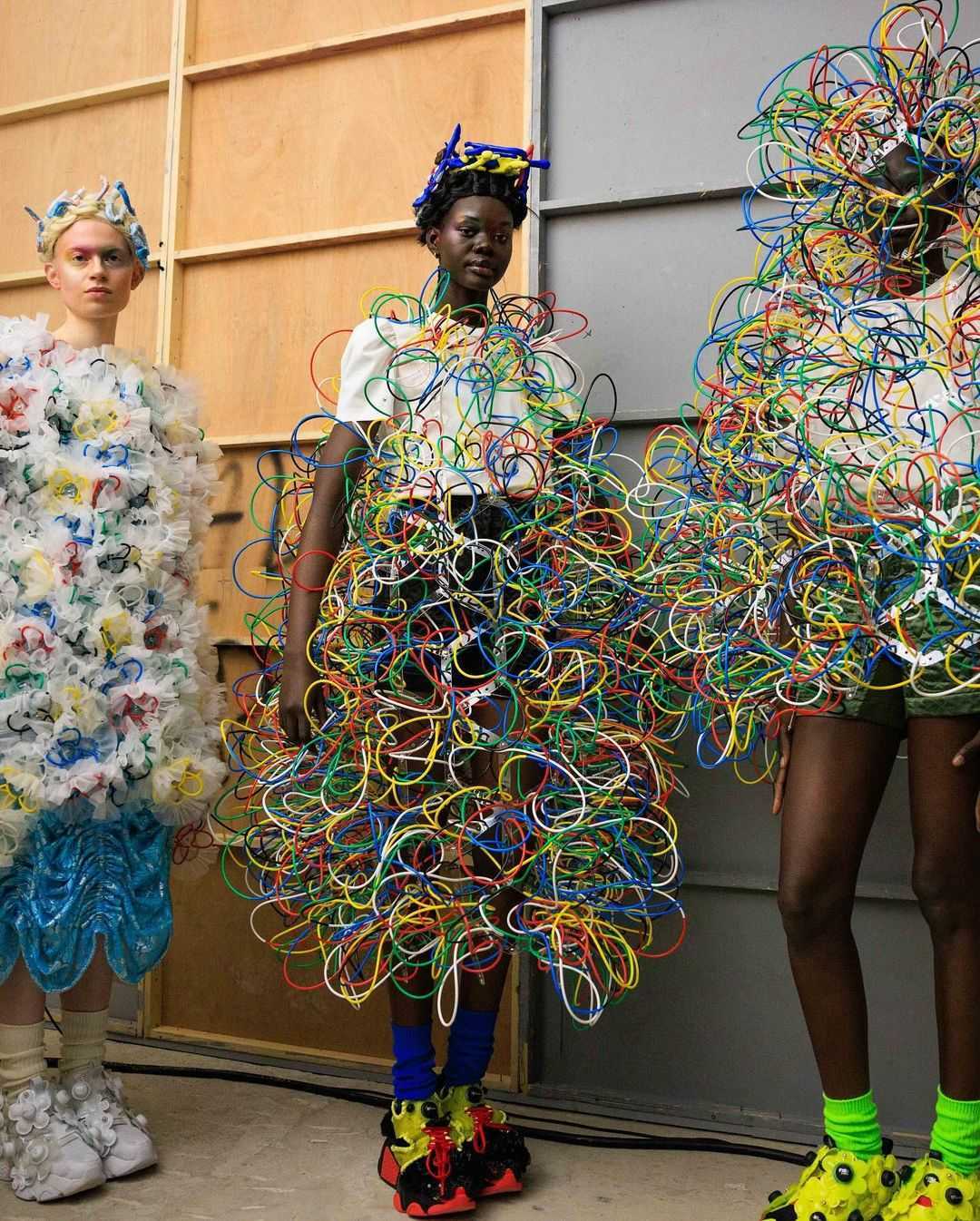Wearable Art: Exploring the Intersection of Fashion, Technology, and Self-Expression
Art You Can Wear: Where Fashion Meets Imagination
Introduction: Wearable Art as Story
Wearable art transforms fashion into storytelling—each garment becomes a canvas for ideas, emotions, and cultural commentary. At Wearable Art Stories, we believe clothing should do more than cover the body; it should spark imagination.
A Rich History of Wearable Art
The lineage of wearable art stretches back to early 20th‑century craft movements and gained the term “wearable art” in the 1970s, as artists began creating garments meant to be viewed as art rather than mere clothing (Vogue).
Elsa Schiaparelli, a pioneer in 1930s Paris, shattered norms by collaborating with Surrealist artists like Salvador Dalí and Jean Cocteau. She transformed garments into visual statements that blurred the boundary between art and fashion (The Times).
Iconic Works by Elsa Schiaparelli
-
The Lobster Dress (1937)A white silk organza evening gown with Dalí’s oversized lobster painted along the skirt—worn by Wallis Simpson in Vogue and instantly scandalous, this piece epitomized the surrealist collaboration (Wikipedia).
-
The Shoe Hat (1937–38)A whimsical hat shaped like an upside‑down shoe perched atop the wearer’s head—a surreal fusion of humor and haute couture (fashionhistory.fitnyc.edu).
-
The Skeleton Dress (1938)A black evening dress with raised padding outlining a skeleton—melding identity, form, and playful macabre imagery (fashionhistory.fitnyc.edu).
-
The Tears Dress (1938)Featuring trompe‑l’œil printed rips, symbolizing inner turmoil as the world teetered on the edge of war—an unsettling, emotional statement (Wikipedia).
-
Insect JewelryBold accessories with crawling insects embedded in transparent materials—mixing wonder with nature-inspired elements (Wikipedia).
Design Philosophy: Bold, Surreal, and Functional
-
Fearless color usage, including her signature “Shocking Pink” (The Times)
-
Surrealist inspiration, using visual illusion and humor to convey deeper narratives (DailyArt Magazine)
-
Fashion as wearable art, challenging norms while retaining function
-
Playful subversion, provoking thought through bold design
Contemporary Voices in Wearable Art
Behnaz Farahi – Interactive, Responsive Fashion
Iranian‑American designer Behnaz Farahi merges technology and feminism. Her 2015 piece “Caress of the Gaze” is a 3D‑printed cape that responsively opens where viewers look, challenging norms around gaze and surveillance (WIRED).
Pia Myrvold – Cybercouture & Audience Interaction
Norwegian artist Pia Myrvold creates wearables that merge media, sound, and interactivity. Works such as “Dada Memory” (1996) responded to touch with audio, while “Female Interfaces” invited wearer-audience interaction through garment-embedded controls .
Why Wearable Art Matters
-
Self-expression & identity: Wearing art lets individuals embody ideas or cultural narratives.
-
Bridges disciplines: Merges technology, design, art, and tradition.
-
Provokes dialogue: Challenges societal norms and invites conversation.
-
Promotes sustainability & innovation: Encourages handcrafted, upcycled, or tech-augmented creation.
Featured Example: Caress of the Gaze
Behnaz Farahi’s 2015 cape uses a hidden camera and shape-memory components to open in response to viewers' gazes, turning passive surveillance into an interactive, wearable commentary (WIRED).
How You Can Bring This to Life
-
For Creators & Makers: Experiment with unconventional materials—LEDs, recycled fabrics, 3D prints, or circuits.
-
For Storytellers: Root your work in narrative—what inspired it, and what does it express?
-
For Your Audience: Share behind-the-scenes—sketches, quotes, workshops, and videos deepen connection.
Join the Conversation
Wearable art isn’t just worn—it’s experienced. Submit your creations, inspire others, or nominate artists you'd like to see featured. Your wearable art could shape our next story.
Summary Table: Past vs Present
| Era | Artist | Innovation & Style |
|---|---|---|
| 1930s Surrealism | Elsa Schiaparelli | Bold color, art collaborations, trompe-l’œil, whimsy |
| 2010s–Present | Behnaz Farahi | Interactive tech, gaze-responsive design |
| 1990s–Present | Pia Myrvold | Touch-responsive, cybercouture interfaces |
Conclusion
From Elsa Schiaparelli’s surreal couture and Dalí’s lobster motifs to Behnaz Farahi’s interactive fabrics, wearable art continues to challenge boundaries—melding aesthetics, technology, and storytelling. It’s not just fashion—it’s expression, identity, and connection.
If you’re ready to weave narrative into material form—whether you’re a maker, muse, or collector—reach out to collaborate, share your piece, or let’s imagine something new together .

Comments
Post a Comment